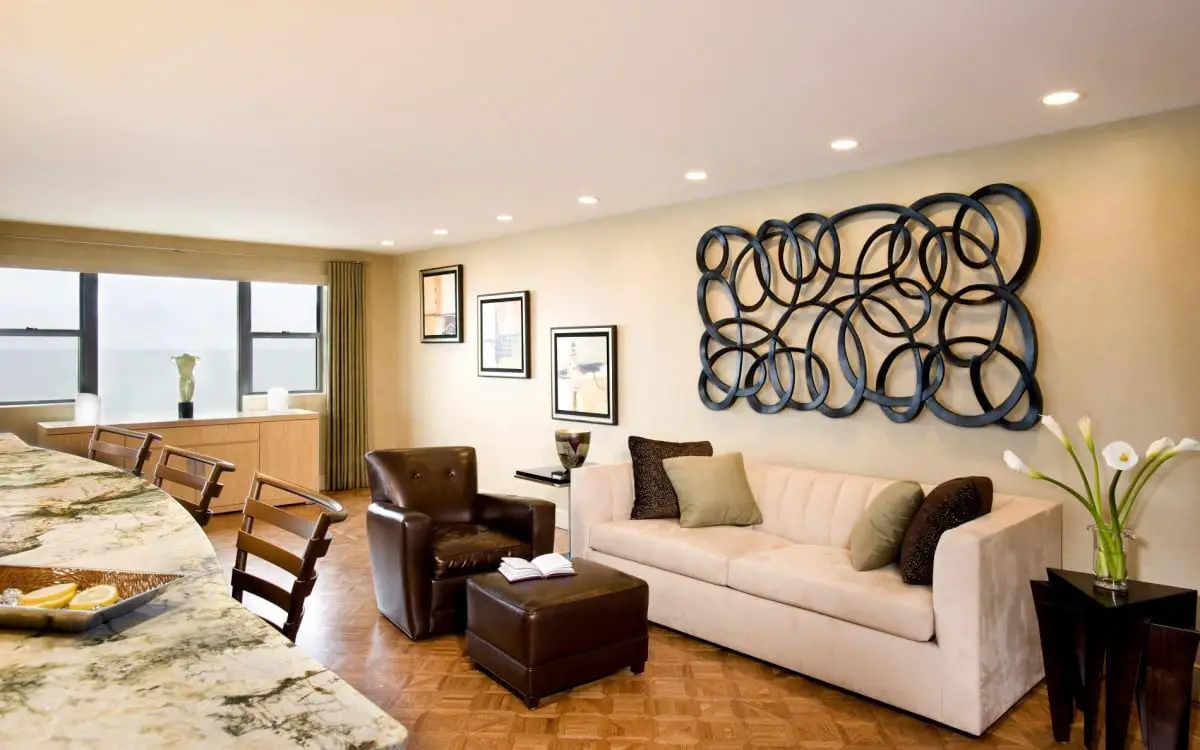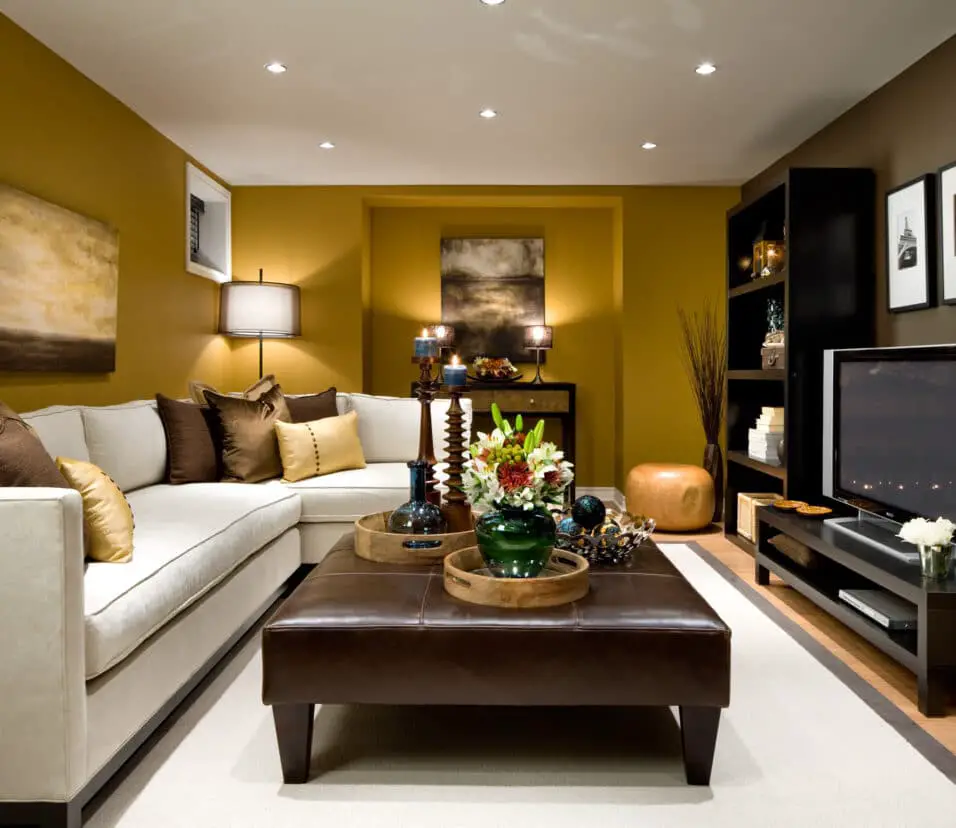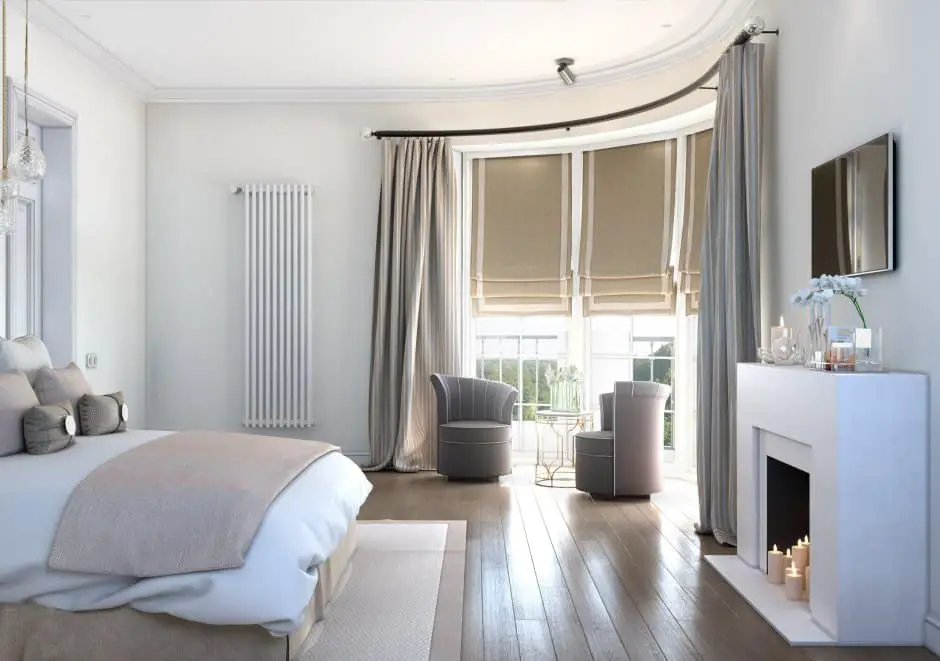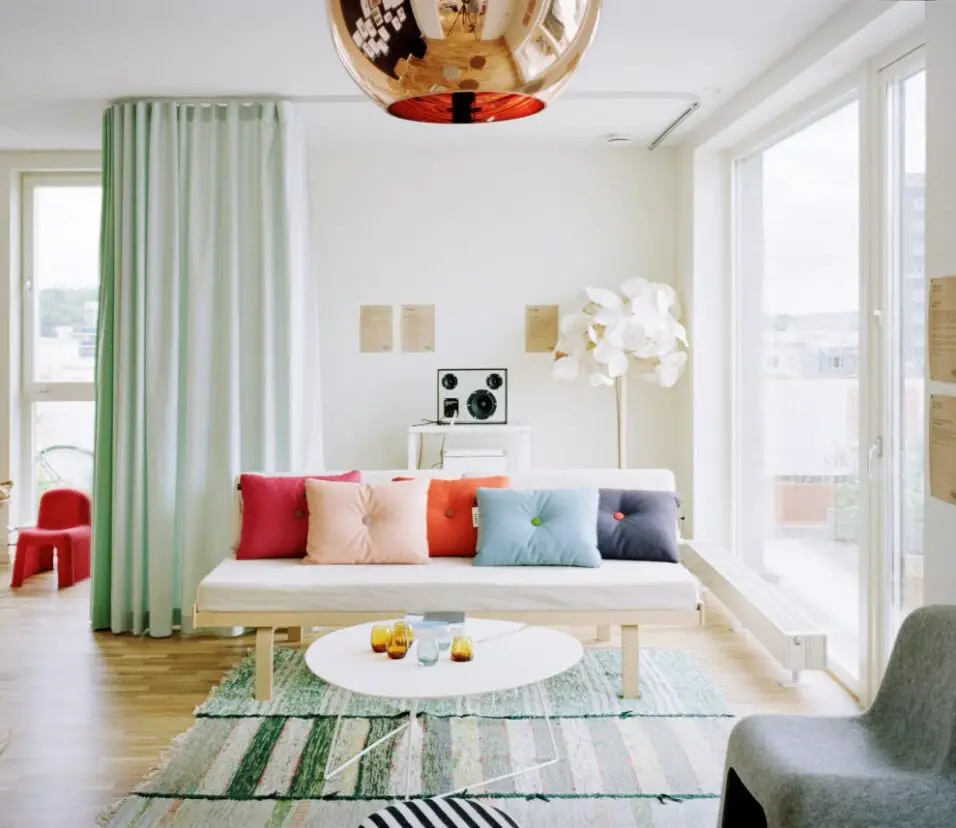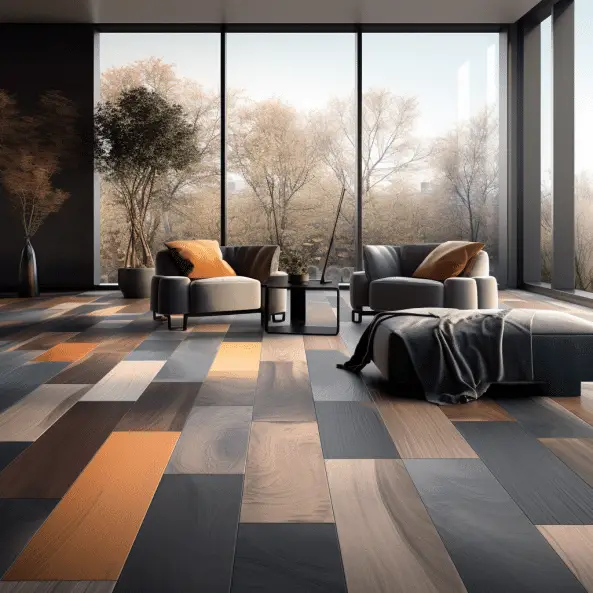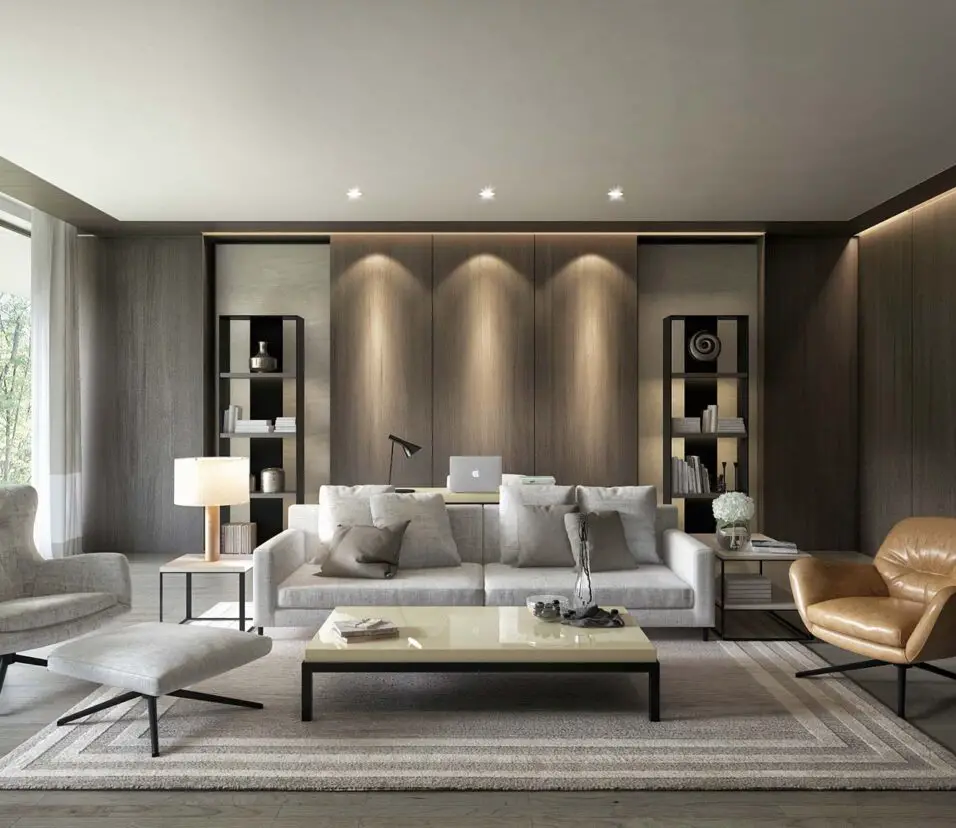How To Avoid The Five Worst Living Room Design Mistakes
Introduction
The living room is undoubtedly one of the most important spaces in any home. It serves as a gathering place for family and friends, a relaxation zone, and often the first impression guests have of your personal style and taste. However, designing a living room can be a daunting task, especially if you’re not aware of the common mistakes that can hinder the overall aesthetic and functionality of the space. By understanding these pitfalls and implementing the right strategies, you can create a living room that is not only visually appealing but also a comfortable and inviting sanctuary for everyone to enjoy.
The issue of poor furniture arrangement, where haphazardly placed pieces can disrupt traffic flow and impede conversation. The importance of appropriate lighting and how improper lighting choices can create an unbalanced atmosphere. The problem of neglecting the scale and proportion of furniture, which can lead to an overwhelming or underwhelming visual impact. However, architectural designing a living room that is both functional and visually appealing can be a daunting task. Many homeowners unknowingly make common design mistakes that can detract from the overall aesthetic and functionality of their living space.
Mismatched color schemes can also detract from the overall cohesiveness of a living room. We will provide guidance on selecting a harmonious color palette, considering factors such as room size, natural light, and personal preferences. One of the most prevalent mistakes is poor furniture placement. It’s easy to fall into the trap of arranging furniture without considering the room’s flow or the intended use of each area.
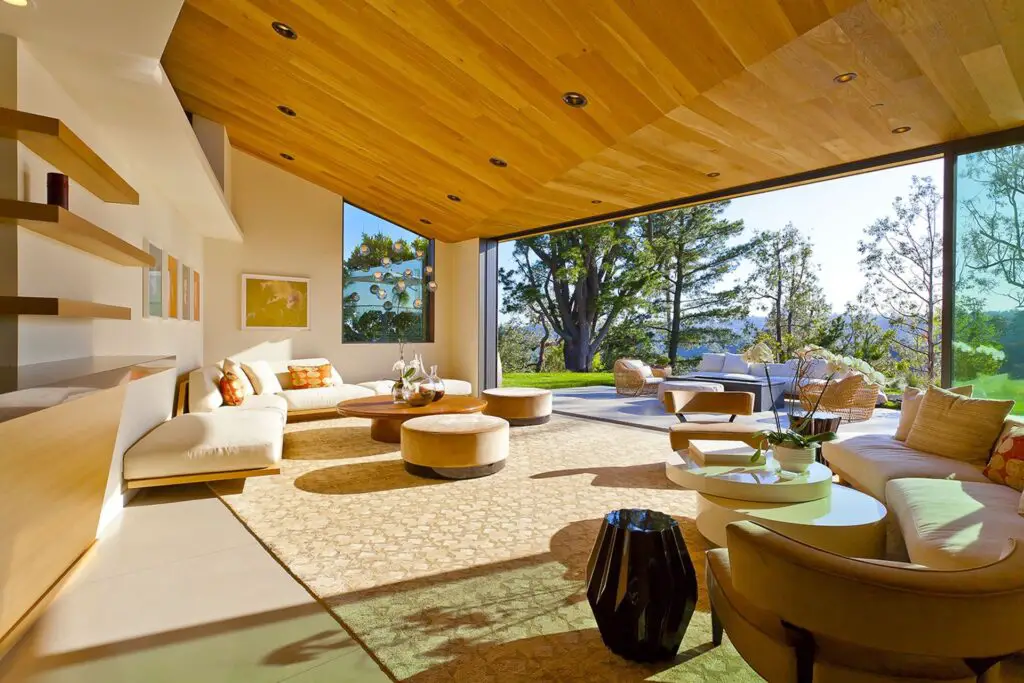
What To Avoid When Decorating Living Room?
The 7 Biggest Living Room Decorating Mistakes You’re Making and How to Fix Them, According to Designers
- You’re using too many large pieces of furniture.
- You don’t have enough seating.
- You’re not changing up artwork.
- Your decor doesn’t balance out your furniture.
- You’re buying furniture that isn’t built to last.
When it comes to decorating a living room, there are certain pitfalls that should be avoided in order to create a harmonious and inviting space. Here are some things to steer clear of when decorating your living room:
Overcrowding: Avoid filling the living room with too much furniture or accessories. It’s important to leave enough space for movement and to create a sense of openness. Choose furniture that is appropriately sized for the room and arrange it in a way that allows for easy flow.
Clashing colors: While it’s great to experiment with color, be cautious of using too many conflicting hues in your living room. Opt for a cohesive color scheme that creates a pleasing visual balance. Stick to a few complementary colors and incorporate them through furniture, artwork, and textiles.
Poor lighting: Avoid inadequate or harsh lighting in the living room. Insufficient lighting can make the space feel gloomy, while overly bright lighting can be uncomfortable. Aim for a combination of ambient, task, and accent lighting to create a warm and inviting atmosphere.
Lack of personal touch: Your living room should reflect your personality and style. Avoid generic and impersonal decor that lacks character. Incorporate personal touches, such as family photos, artwork, or mementos, to make the space feel unique and inviting.
Neglecting functionality: It’s important to consider the functionality of the living room. Avoid choosing furniture or decor that looks good but doesn’t serve a purpose. Ensure that seating is comfortable and that there is ample storage for books, magazines, and other essentials.
What Are The Worst Decorating Mistakes?
So don’t beat yourself up for your own interior design mistakes and learn how to avoid future ones.
- Not Considering Fire Hazards.
- Not Seeing Fabric in Person.
- Wallpapering Just One Wall.
- Not Checking for Outlets.
- Not Measuring for Scale.
- Using Too Much of a Good Thing.
- Overlooking Architectural Details.
Decorating mistakes can detract from the overall aesthetic and functionality of a space. Here are some of the worst decorating mistakes to avoid:
Poorly scaled furniture: Choosing furniture that is too large or too small for a room can throw off the balance and make the space feel cramped or empty. It’s crucial to measure the room and select furniture that is proportionate to the space. Ensure that there is enough room for comfortable movement and that the furniture fits well within the room’s dimensions.
Ignoring the flow of the room: A common mistake is disregarding the flow and circulation of the space. Blocking pathways or placing furniture in a way that hinders movement can make a room feel awkward and unwelcoming. Consider the natural traffic flow and arrange furniture accordingly, ensuring that there is a clear and unobstructed path.
Lack of proper lighting: Insufficient lighting or relying solely on overhead lighting can create a dull and uninviting atmosphere. Lighting plays a crucial role in setting the mood and enhancing the overall ambiance of a room. Incorporate a variety of lighting sources, such as ambient, task, and accent lighting, to create a well-lit and visually appealing space.
Clashing patterns and colors: Overloading a room with too many patterns or using clashing color combinations can create visual chaos and make the space feel overwhelming. It’s important to strike a balance by selecting a cohesive color palette and incorporating patterns thoughtfully. Use patterns and colors to complement each other and create a harmonious visual appeal.
What Are The Home Decor Mistakes People Usually Make?
Here are 15 interior design/decor mistakes to avoid:
- Pushing Furniture Against the Wall.
- Using Bright Hues on Walls.
- Not Hanging Any Art.
- Using Floor Lamps.
- Displaying All Your Tchotchkes.
- Using Dark Colors.
- Using Many Patterns.
- Having Mismatched Flooring.
When it comes to home decor, there are common mistakes that people often make. These mistakes can hinder the overall aesthetic and functionality of a space. Here are some of the home decor mistakes to avoid:
Overcrowding: One of the most common mistakes is overcrowding a room with too much furniture and accessories. It’s important to leave enough space for movement and to create a sense of openness. Select furniture that is appropriately sized for the room and arrange it in a way that allows for easy flow.
Ignoring the importance of scale and proportion: Choosing furniture and decor that is out of scale with the room can throw off the balance and make the space feel off-kilter. It’s crucial to consider the size and proportions of the room and select items that complement its dimensions.
Poor color choices: Selecting the wrong colors can have a significant impact on the overall atmosphere of a room. Choosing colors that clash or overwhelm the space can be a big mistake. It’s important to consider the lighting, mood, and overall aesthetic of the room when selecting a color scheme.
Neglecting lighting: Inadequate or improper lighting can make a room feel dull and uninviting. It’s important to incorporate a variety of lighting sources, including ambient, task, and accent lighting, to create a well-lit and visually appealing space.
How Do You Prevent Design Mistakes?
15 Tips on how to avoid new product design mistakes when working with industrial designers
- Know your design goals.
- Check for intellectual property carefully.
- Make team communication a priority.
- Look for cloud-based software.
- Design for manufacturers from the beginning.
- Start communicating with manufacturers early.
Preventing design mistakes requires thoughtful planning and consideration of various aspects of the design process. Here are some tips to help you prevent design mistakes:
Define your goals: Before starting any design project, clearly define your goals and objectives. Understand the purpose of the space and the desired outcome. This will guide your decisions and prevent you from veering off track.
Plan and research: Take the time to plan and research different design styles, trends, and options. Gather inspiration from various sources such as magazines, websites, and social media platforms. Create mood boards or visual references to help you visualize the final result.
Consider functionality: Design should not only be aesthetically pleasing but also functional. Consider how the space will be used and ensure that the design elements accommodate those needs. For example, in a kitchen, prioritize efficient workflow and adequate storage.
Scale and proportion: Pay attention to scale and proportion when selecting furniture, decor items, and architectural features. Ensure that the size of each element complements the overall space and each other. Avoid overcrowding or choosing items that are too small or too large.
Test and visualize: Utilize tools such as floor plans, 3D renderings, or virtual reality to visualize the design before implementation. This will help you identify any potential design mistakes or areas that need adjustment.
Seek professional advice: If you’re unsure about certain design decisions or lack expertise in a specific area, don’t hesitate to consult with professionals. Interior designers, architects, or contractors can provide valuable guidance and help you avoid costly mistakes.

What To Avoid When Decorating?
6 Decorating Mistakes That Make Your Home Look Messier
- Relying Too Much on Open Storage.
- Using Too Many Colors.
- Adding Too Many Accent Pillows.
- Pushing Furniture Against Walls.
- Placing Too Much Decor on Tables.
- Hanging Pictures Randomly.
When it comes to decorating, there are certain things to avoid in order to create a cohesive and visually pleasing space. Here are some key aspects to avoid when decorating:
Overcrowding: Avoid overcrowding a room with excessive furniture and accessories. Give each piece of furniture and decor space to breathe, allowing for easy movement and a sense of openness. A cluttered space can feel overwhelming and chaotic.
Ignoring scale and proportion: Choosing furniture and decor items that are out of scale with the room can throw off the balance and make the space feel awkward. Ensure that the size and proportions of the items are appropriate for the room and complement each other.
Clashing colors and patterns: Be cautious when combining colors and patterns. Clashing color combinations or too many conflicting patterns can create visual chaos. Opt for a harmonious color scheme and use patterns sparingly to maintain balance.
Neglecting lighting: Adequate lighting is crucial for setting the right mood and enhancing the overall ambiance. Avoid relying solely on overhead lighting or insufficient lighting. Incorporate a variety of lighting sources, including ambient, task, and accent lighting, to create a well-lit and inviting space.
Lack of personal touch: Your home should reflect your personality and style. Avoid generic and impersonal decor that lacks character. Incorporate personal touches, such as artwork, family photographs, or cherished mementos, to make the space feel unique and welcoming.
How Do I Avoid Overcrowding My Living Room Space?
To avoid overcrowding, be mindful of the size of your furniture pieces and the overall space available. Select furniture that fits the scale of the room and leave enough room for comfortable movement. Avoid cramming too many pieces into the space, and consider multifunctional furniture or built-in storage solutions to maximize the use of space.
Avoiding overcrowding in your living room is essential to create a comfortable and inviting space. Here are some tips to help you avoid overcrowding your living room:
Plan the layout: Start by carefully planning the layout of your living room. Consider the size and shape of the room and determine the best placement for furniture. Measure the dimensions of the room and your furniture to ensure a proper fit. Allow for sufficient walking space and ensure that furniture pieces don’t obstruct pathways.
Choose appropriately-sized furniture: Select furniture that is proportionate to the size of your living room. Avoid oversized or bulky furniture that takes up too much space. Opt for streamlined and compact furniture pieces that provide both comfort and functionality without overwhelming the room.
Prioritize essential furniture: Identify the essential furniture pieces that are necessary for your living room. This typically includes a sofa or sectional, coffee table, and perhaps an entertainment center or shelving unit. Avoid adding unnecessary furniture items that can clutter the space.
Utilize multi-functional furniture: Maximize the functionality of your living room by incorporating multi-functional furniture. For example, consider a coffee table with built-in storage or ottomans that can serve as both seating and storage. This allows you to save space and eliminate the need for additional furniture pieces.
What Should I Do To Create A Focal Point In My Living Room?
To create a focal point, choose a standout element such as a fireplace, large artwork, or a statement piece of furniture. Arrange the remaining furniture and accessories around this focal point to draw attention and create a sense of balance. The focal point should be the central focus of the room and guide the overall design.
Creating a focal point in your living room can add visual interest and draw attention to a specific area or element. Here are some tips to help you create a focal point in your living room:
Choose a standout feature: Identify a standout feature in your living room that can serve as the focal point. This could be a fireplace, a large window with a beautiful view, a statement piece of furniture, or a striking piece of artwork. Select something that naturally captures attention and becomes the center of focus.
Arrange furniture strategically: Position your furniture in a way that directs attention towards the focal point. Arrange seating around the focal point to create a sense of cohesion and draw the eye towards the desired area. For example, arrange sofas and chairs facing the fireplace or place them in a way that frames a large window or artwork.
Use color and contrast: Utilize color and contrast to highlight the focal point. Paint the wall behind the focal point in a different color or use wallpaper with an eye-catching pattern. Choose complementary colors or shades that enhance the visual appeal of the focal point.
Lighting accents: Use lighting to accentuate the focal point. Install a spotlight or wall sconces to direct light towards the focal point, creating a dramatic effect. Proper lighting not only highlights the focal point but also enhances its presence in the room.
Decorative elements: Enhance the focal point with carefully chosen decorative elements. For example, place a decorative vase or sculpture on a mantel or shelf above the fireplace, or hang artwork or a mirror above a statement piece of furniture. These additional elements can further emphasize the focal point and add visual interest.
How Can I Add Personal Touch And Character To My Living Room Design?
To add personal touch and character to your living room design:
- Display meaningful artwork, photographs, or memorabilia that reflect your personality and interests.
- Incorporate items from your travels or hobbies as decorative elements.
- Use unique or custom-made furniture and accessories.
- Experiment with color schemes, patterns, or textures that resonate with your style.
Adding a personal touch and character to your living room design is a wonderful way to make the space feel uniquely yours. Here are some tips to help you infuse your personality into your living room:
Display cherished items: Showcase items that hold sentimental value or evoke special memories. This could include family photographs, travel souvenirs, or heirlooms. Arrange them on shelves, mantels, or create a gallery wall to add a personal touch.
Incorporate your hobbies and interests: Integrate your hobbies and interests into the decor. If you’re an avid reader, create a cozy reading nook with a bookshelf and comfortable seating. If you’re a music enthusiast, display your instruments or vinyl collection as decorative elements.
Show off artwork and creations: Display your own artwork, paintings, or photography on the walls. This not only adds a personal touch but also showcases your creativity. Alternatively, support local artists and hang their pieces to add a unique touch to your living room.
Customize with textiles and pillows: Introduce personalized textiles, such as custom-made throw pillows, blankets, or curtains. Look for patterns, colors, or fabrics that resonate with your style and preferences. These elements can instantly add warmth and personality to the room.
DIY projects and upcycling: Consider incorporating DIY projects or upcycled furniture into your living room. Refurbish an old piece of furniture, create your own artwork, or repurpose items in creative ways. This adds a sense of craftsmanship and uniqueness to the space.
Play with color and patterns: Experiment with colors and patterns that reflect your personality. Whether you prefer bold and vibrant hues or soft and muted tones, use them in accent walls, rugs, or accessories to inject your personal style into the living room.
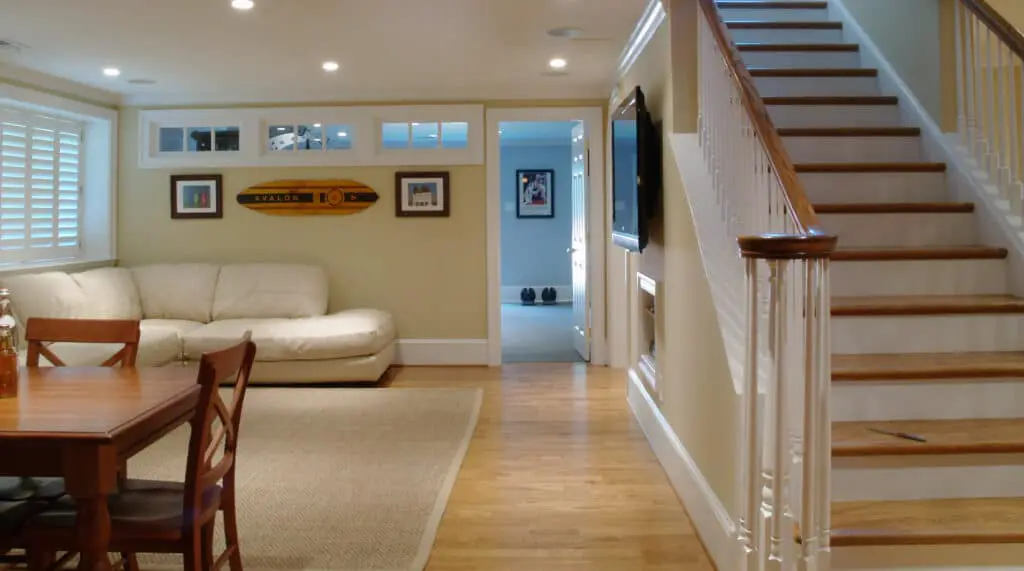
Conclusion
Designing a living room can be a challenging task, but by understanding and avoiding the five worst design mistakes, you can transform your space into a visually appealing and functional haven. By carefully arranging furniture to promote traffic flow and conversation, you can create a harmonious and inviting living room. Choosing the right lighting fixtures and incorporating a combination of ambient, task, and accent lighting will enhance the atmosphere and functionality of the space. Moreover, paying attention to the scale and proportion of furniture will ensure a balanced and aesthetically pleasing layout.
Selecting an appropriate color scheme that aligns with your desired mood and reflects your personal style is crucial for creating a cohesive and visually pleasing living room. Lastly, tackling clutter and implementing smart organization solutions will create a clean and organized space that enhances the overall appeal and functionality. By avoiding these five common mistakes and following the principles outlined in this guide, you can design a living room that not only showcases your personal style and taste but also provides a comfortable and inviting environment for both you and your guests.
By avoiding these common design mistakes, you can transform your living room into a haven that reflects your personality, meets your needs, and offers a welcoming environment for both you and your guests. Remember, designing a living room is an ongoing process, and it’s important to periodically assess and adjust the space to ensure it remains functional and visually appealing for years to come.



